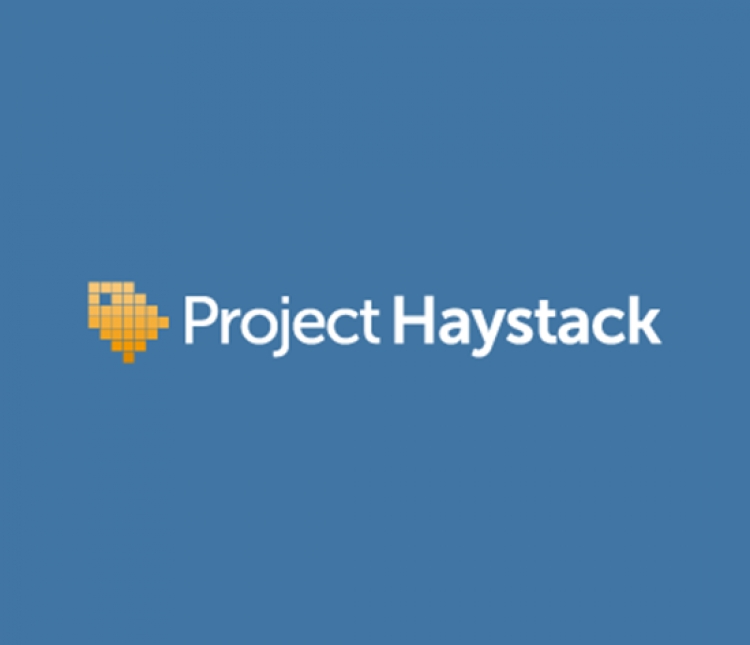If the age of digitization has provided us with anything, it is data. Millions of data points from millions of sensors connected to an increasingly wide range of systems and applications. Turning all this data into useful information, however, can be a challenge. Data comes in widely varying formats, with different vendors handling and expressing data in different ways. Different protocols also have different ways of expressing data, and the lack of a single standard protocol in the world of smart cities and building automation compounds the issue.
The Cost of Point to Point Integration
Lack of common context for data also comes with a cost. In today’s smart city implementation projects, much of the integration between systems and applications must be done in a point to point fashion, with the aid of systems integrator or engineering firm. This is a great cost to end uses and owner-operators. When looking at smart city software and system implementation projects, more than half of the cost of an overall project can be taken up by custom integration efforts. This offers a significant business opportunity and potential for both reduced project and operational costs, since these custom integrated environments must be maintained and tended to throughout their lifecycle.
Project Haystack
The consolidation of data into a common environment or context is necessary if you want to turn that data into useful information that can allow you to make informed decisions about how to run your cities, communities, buildings, and more. This is where Project Haystack comes in, which is an open industry initiative that is focused on providing a common metadata methodology for building automation, smart city, and other applications.
According to Project Haystack Executive Director, John Petze, “The challenge in our domain (building systems) is that device data are stored in many different formats, communicated via numerous protocols, have inconsistent non-standard naming conventions, and have very limited descriptors to enable us to understand meaning without direct human knowledge of the device producing the data. Ideally, we want data to be self-describing. Without that, a time-consuming manual effort is required before data can be used effectively to generate value.”
Structure and Purpose
Project Haystack was formed in 2014 as 501(c) tax-exempt non-stock corporation to function as “a trade association with the purpose of fostering the common association and interests of software and technology companies focused on developing semantic modeling solutions for data related to smart devices including: building equipment systems, automation and control devices, sensors and sensing devices, promotion and education with respect to the semantic data modeling industry for building automation systems, and to engage in educational activities directed towards the improvement of business conditions of the semantic data modeling industry for smart device data… All work developed by the Project Haystack community is provided for use as open source software under the Academic Free License 3.0.”
More Than Just Data Tagging
Project Haystack’s vision is to streamline the use of IoT data by creating a standardized approach to defining “data semantics”, related services, and APIs to consume and share the data and its semantic descriptors. Project Haystack aims to make data “self-describing”. It does this by relying heavily on data modeling methodology – and its tagging approach can be used in media from Excel spreadsheets and CSV text files, to data tables in embedded devices, XML representations, Web services and others.
Haystack also includes consensus-developed tagging libraries (taxonomies) published and made available for download and use (at no cost). Haystack also encompasses the REST communication protocol designed to exchange Haystack tags between applications. The group is also developing reference implementations and complementary applications are also being developed by various community members and companies. These include:
- Haystack Java Toolkit: lightweight J2ME compliant client and server implementation
- NHaystack: Niagara module to add Haystack tagging and the Haystack REST API
- Haystack CPP: C Haystack client and server implementation
- Haystack Dart: client library for Dart programming language
- NodeHaystack: node.js client/server implementation
Perhaps most important, however, is the community that has formed to address the challenges of data modeling for building systems and IoT devices. The Project Haystack community continues to grow and expand the equipment and device models (taxonomies) and extend the range of applications served by Project Haystack.
Open Source
Project Haystack is operated as an open source project, which makes it easy for anyone to get involved. Anyone can easily take advantage of the work of Project Haystack and contribute to it. Anyone can contribute on the forum by signing up on the website. Domain experts in each space such as chillers, data centers, or refrigeration can join or start a discussion. Equipment manufacturers who would like to see specific tag models for their products are also a great source of input. All the work done by Project Haystack is easily available to the industry community. It can be downloaded without even registering an account on the Web site. There is no cost or obligation associated with using Project Haystack techniques, tagging libraries and open source reference implementations.
Member Companies
Founding member companies for Project Haystack include Siemens, Intel, Conserveit, J2 innovations, SkyFoundry, Legrand, and Lynxspring. Associate members include almost 20 additional suppliers and service providers of all types. Membership is open to anyone. Project Haystack encompasses the entire value chain of building systems and related intelligent devices. For membership, contact This email address is being protected from spambots. You need JavaScript enabled to view it..

Larry O’Brien is Vice President, Research and part of the cybersecurity and smart cities and infrastructure teams at ARC, with a 20-year background in process control, process safety, and field devices/field networks.
SHARE ON:

